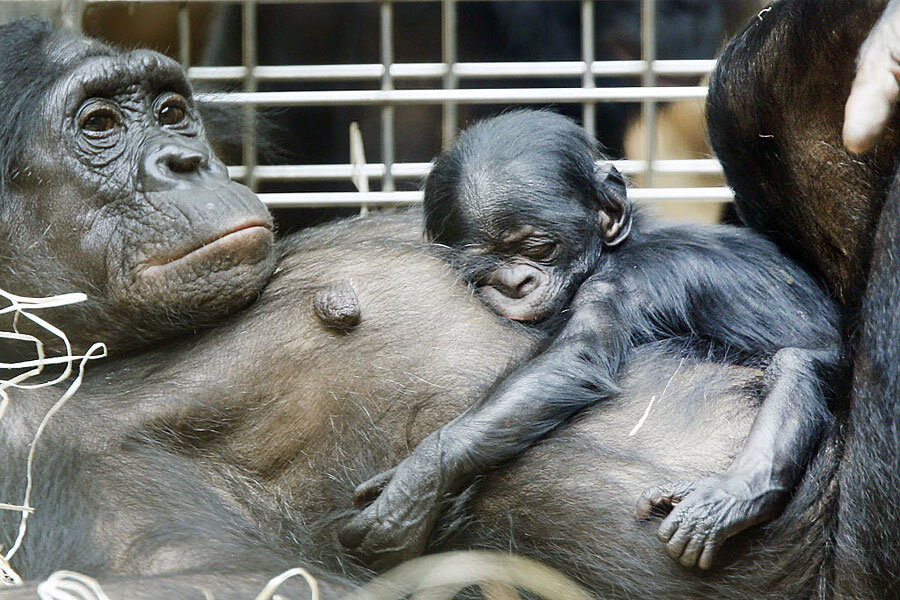Can a nonhuman ape be a film buff?
Loading...
You'll never forget some movie scenes, particularly in thrillers. The moment of terror may be imprinted on your mind, but you’re not alone.
Our hairy cousins, it turns out, can remember scary or dramatic moments in a film too.
Just as you might anticipate an upcoming moment in a previously watched thriller, chimpanzees and bonobos keep an eye on the part of the screen where something exciting will happen, according to a study published Thursday in Cell Press of Current Biology.
Researchers noticed that the apes would perform anticipatory glances when they knew what would happen next, even after seeing the film just once.
"When you watch a shocking, emotional event in a movie, you remember the event well, and later on, when you watch the same movie, you anticipate the event," Fumihiro Kano of Kyoto University said in a news release. "Thanks to a recent advance of state-of-the-art eye-tracking technologies, we could examine event anticipation by great apes while watching a movie by means of 'anticipatory looks' to the impending events."
Six chimpanzees and six bonobos were selected as the lucky movie-watching apes. They were shown two short films, acted and directed by the Kyoto researchers.
In one video clip, a person in an ape suit burst out of one of two identical doors. The “ape” was then the aggressor, attacking one of the human characters. The other film showed a human character selecting one of two items to use as a weapon against the ape-like character.
The researchers showed the apes each film twice with 24 hours between showings. While the chimp or bonobo watched, technology tracked where they looked.
When the apes watched the clips for the second time, their anticipatory gaze became clear to researchers. The apes stared at the door where the ape-costumed actor would appear in the first film.
In the second video, they focused on the object the person would later select to use as a weapon. Researchers even tried to test their subjects further by changing the location of that item. The apes still looked at the correct object.
The great apes didn’t get to enjoy buttery movie theatre popcorn, but they still seemed to enjoy watching the films.
"We were giving juice while showing the videos to them," Kano said, "but some of them even forgot to drink [the] juice and stared at the movies!"
Humans often quote lines from their favorite movies in casual conversation, and great apes might be capable of such vocalization too.
A study published in July revealed that Koko, a gorilla famous for communicating using American Sign Language, could potentially communicate vocally as well. Researchers observed Koko controlling her breathing and using patterns to her grunts, much like speech patterns.
Our fellow apes might not be that different from us after all. We may even share some vices.
Wild chimpanzees were spotted consuming naturally occurring alcohol on a regular basis by researchers, according to a paper published in June. Scientists were unsure whether they experienced inebriation like humans, but they did exhibit similar reactions after consuming a substantial amount.
Sometimes chimps can actually beat humans at their own game.
When researchers gave chimpanzee strategy games to play in a 2014 study, the chimps out-performed humans.
That success could be chalked up to different survival needs. “Competition is central in chimpanzee life,” Rahul Bhui, a coauthor of that study, told The Christian Science Monitor in June 2014. Human society requires more cooperation.
Next time you need a teammate in a game of wits or a date to the movies, a large hairy ape might not be a bad choice.









